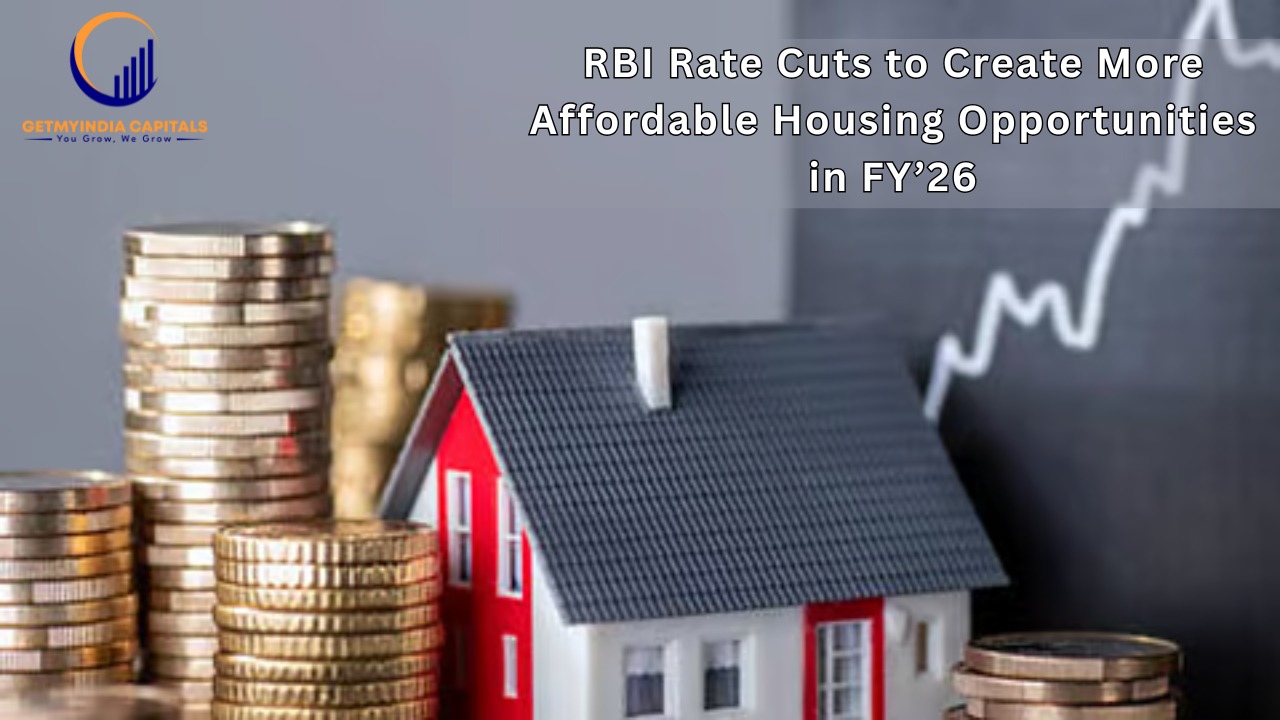Introduction
The Indian housing sector is poised for significant growth in FY 2025-26 as industry experts anticipate further reductions in the Reserve Bank of India’s (RBI) repo rate in the upcoming monetary policy review. A potential rate cut is expected to make home loans more affordable, increasing accessibility for prospective buyers and driving stronger demand across various housing segments. The expected reduction in borrowing costs will be particularly beneficial for first-time homebuyers and those looking to upgrade their residences, fostering a more dynamic real estate market.
Understanding the Impact of RBI’s Rate Cuts
The RBI’s decision to lower interest rates is a pivotal step towards stimulating economic growth and revitalizing the housing market. By reducing the repo rate, the central bank is effectively lowering the cost of borrowing for banks, which in turn can offer home loans at more competitive interest rates.
Key Benefits of Lower Interest Rates
- Increased Affordability: Lower interest rates mean reduced EMIs (Equated Monthly Installments), making home loans more affordable for potential buyers.
- Boost in Demand: With more affordable borrowing costs, there is likely to be an increase in demand for residential properties.
- Market Stimulation: The housing sector, a significant driver of economic growth, is expected to see a surge in activity, leading to job creation and increased consumer spending.
Regional Impact of RBI’s Rate Cuts
The impact of the RBI’s rate cuts is expected to vary across different regions of India. Here’s a breakdown of the anticipated effects:
- Metropolitan Cities
In cities like Mumbai, Delhi, and Bangalore, the rate cuts are likely to lead to a surge in demand for both affordable and luxury housing. The increased affordability will attract a broader range of buyers, driving up sales and property values.
- Tier-II and Tier-III Cities
In smaller cities, the rate cuts are expected to have an even more pronounced effect. These regions have seen a growing demand for housing, and the lower interest rates will further stimulate the market, leading to increased construction and sales.
RBI’s Rate Cuts Could Make Housing More Affordable in FY’26
Raoul Kapoor, Co-CEO, Andromeda Sales and Distribution Pvt. Ltd,says lower interest rates reduce borrowing costs for consumers, thereby increasing their affordability and eligibility for loans. If the RBI proceeds with a 50-basis point rate cut in April, coupled with the previous 25-basis point cut in February, the cumulative reduction in repo rates will stand at 75 basis points (0.75%). This will have a significant impact on home loan borrowers.
For instance, if someone is planning to take a home loan of ₹ 75 Lakh at an interest rate of 9% for a tenure of 20 years, their current EMI would be approximately ₹ 67,493. However, if the interest rate drops by 0.75% (from 9% to 8.25%), their EMI will reduce to approximately ₹ 63,901. This results in a monthly savings of about ₹ 3,592 and a total savings of nearly₹8.62 lakh over the loan tenure.
Additionally, “lower interest rates enhance loan eligibility. For the same EMI of ₹67,493, the loan amount that a borrower could avail at 8.25% interest (instead of 9%) would increase to approximately ₹79.2 lakh. This means a potential homebuyer can now afford a property priced higher than before, further stimulating demand in the housing sector,” Kapoor added.
RBI Monetary Policy Review
Home loans play a pivotal role in home buying, particularly for end-users, as the majority rely on financing to purchase their homes. A reduction in interest rates directly impacts affordability, making homeownership more accessible and boosting demand across all segments of the housing market. With the Reserve Bank of India initiating a rate cut cycle after maintaining a prolonged status quo, expectations are high for further reductions in the upcoming monetary policy reviews.
Udit Jain, Director, ONE Group Developers, says, “Home loans play a pivotal role in home buying, particularly for end-users, as the majority rely on financing to purchase their dream homes. A reduction in interest rates directly impacts affordability, making homeownership more accessible and boosting demand across all segments of the housing market.”
In its last Monetary Policy Committee (MPC) review meeting, the RBI reduced the repo rate by 25 basis points after maintaining a consecutive status quo for eleven meetings. This marked the beginning of a much-anticipated rate cut cycle, and further reductions are expected in the upcoming MPC meetings, The RBI Governor indicated that macroeconomic conditions are aligning favorably, paving the way for further measures to support economic growth. A repo rate cut is one such key intervention that could significantly impact borrowing costs,” says Sahil Agarwal, CEO, Nimbus Developer.
Conclusion
The anticipated rate cuts by the Reserve Bank of India (RBI) in FY26 hold significant potential for transforming the housing sector, particularly by making affordable housing more accessible to a larger segment of the population. As borrowing costs decrease, both developers and homebuyers will benefit, creating a conducive environment for the growth of affordable housing projects. With lower interest rates, homebuyers are likely to experience reduced EMI burdens, making homeownership more achievable. As these rate cuts align with broader economic growth strategies, they are expected to play a crucial role in addressing housing shortages and supporting the government’s affordable housing initiatives in the coming years. The RBI’s proactive approach to monetary policy could be the catalyst needed to unlock greater housing opportunities for millions in FY26.
GetMyIndia.com RaysVeda.com GetMyStartup.com LawCanal.com ABHAYRAY.COM ZinCob.com

